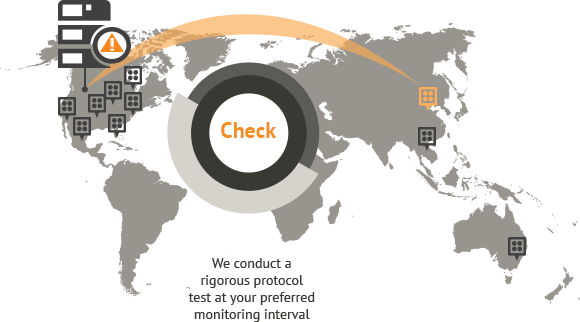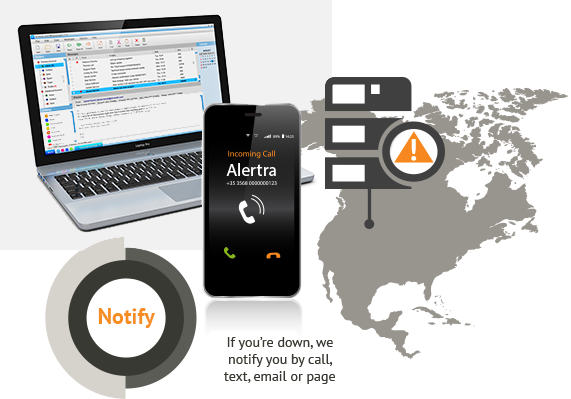How It Works
Step 1: Alertra Synapse™
Every few seconds we send a tiny TCP SYN packet to your server. If your server refuses the connection (returns an RST packet) or doesn't answer at all, we immediately begin a full protocol check from one of our monitoring stations. This innovative process allows us to detect many kinds of outages within seconds.


Step 2: The Full Protocol Check
Whether Synapse detects a problem or not, we're going to conduct a rigorous RFC-compliant protocol test on your server, router or other internet-facing service at the frequency you select (from 1 to 60 minutes). Our many monitoring stations located around the world in carrier-class data centers take turns checking your systems in "round robin" fashion until a failure is detected. We monitor an extensive list of protocols including HTTP, ICMP (ping), SMTP, POP3, TCP, DNS and many others. We also offer a powerful scripting language to monitor web transactions and many other processes.
Step 3: Trust, But Verify
If one of our stations detects a problem, you're probably down. But just in case a local issue is affecting our monitoring station, we check again from two more locations (by default) just to make sure. False alarms are almost impossible. You control how many times we retry and how long we wait between retries for a truly robust and configurable monitoring solution.


Step 4: Notification
Following failure detection, the notification process begins. It can be as simple or as sophisticated as you need it to be. We notify by phone call, SMS text, e-mail and Google Talk (XMPP). Each monitored service can have its own notification escalation schedule configured with as many contacts as needed. Set up a schedule to pause monitoring during periods of planned maintenance. Designate a "master device" such as a router to eliminate unneeded alerts.








